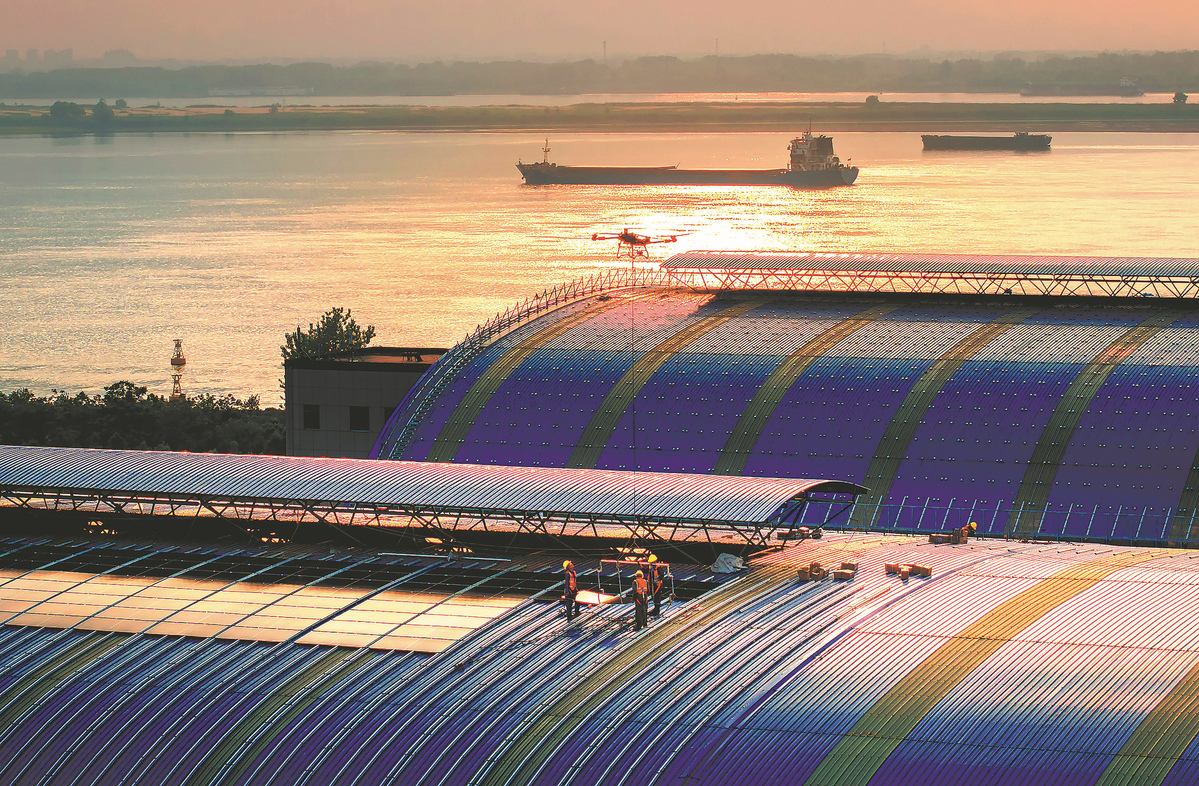Report details climate change progress, as well as challenges
China on track to meet its goals, but AI advances, global warming are issues


The latest report on the state of China's climate response was submitted for review to Chinese lawmakers on Wednesday.
The report, compiled by the State Council, China's Cabinet, details the progress the country has made in climate change response, as well as its efforts to achieve peak carbon emissions and carbon neutrality.
China has developed the world's largest and fastest-growing renewable energy system, has built the world's largest and most comprehensive new energy industrial chain and has contributed a quarter of the world's new green areas. However, growing energy demand presents challenges to climate governance, necessitating a more complete legal system, optimized energy structure and global cooperation, according to the report.
"China is on track to meet its 2030 nationally determined contributions targets for reducing carbon intensity and increasing nonfossil energy consumption. It has already surpassed its 2030 nationally determined contributions targets ahead of schedule for wind and solar power capacity, as well as forest stock volume," said Huang Runqiu, minister of ecology and environment, while elaborating on the report submitted to the ongoing session of the Standing Committee of the National People's Congress, the country's top legislature.
Nationally determined contributions are climate action plans and targets set by countries under the Paris Agreement to address global climate change, which include China's dual carbon goals to peak carbon dioxide emissions before 2030 and achieve carbon neutrality before 2060.
The report said China has made significant progress in its energy and industrial transition. By June, China's installed capacity of nonfossil energy reached 2.22 billion kilowatts, making up 60.9 percent of the total capacity.
The production of photovoltaic modules is 3.7 times higher than it was at the start of the 14th Five-Year Plan period (2021-25), and lithium battery production is 6.4 times higher. China has also led the world in the production and sales of new energy vehicles for 10 consecutive years, the report added.
There are over 6,000 national-level green factories in China, whose output value accounts for around 20 percent of the total output in the manufacturing sector, it added.
Ma Jun, founding director of the Institute of Public and Environmental Affairs, emphasized that China's commitments and achievements in combating climate change are significant, particularly in the new energy sector. However, he noted that the advent and development of artificial intelligence present a double-edged sword in pursuing the dual carbon goals.
"The rapid development of artificial intelligence has led to the establishment of numerous data centers, which require high energy consumption. Currently, the scale and stability of renewable energy are insufficient to support this demand," he said. "To avoid falling behind in international AI competition and to ensure the security of national strategic technologies, even some major Western tech companies that had previously committed to using low-carbon renewable energy are now weakening these commitments and returning to traditional fossil fuels."
Despite these challenges, Ma highlighted that AI also offers solutions in the medium and long term. These include optimizing weather forecasts for wind, solar and water energy, establishing virtual power plants and providing smart minigrid solutions.
Wei Ke, a researcher from the Institute of Atmospheric Physics of the Chinese Academy of Sciences, also warned of the challenges of global warming in green transition.
"Global warming has led to more frequent and intense extreme weather events. This situation poses challenges for maintaining a stable power grid, as extreme heat waves can cause a sharp increase in power demand," he said.
He added that this underscores the need for the establishment of a multilevel unified electricity market system and the construction of a smart grid system, which can intelligently allocate renewable energy across the country.
Gong Kai, Party secretary of North China Electric Power University's School of New Energy, said future energy consumption will exhibit a significant trend of sustained increasing demand and an accelerated transition toward low-carbon energy structures.
"Energy systems are expected to shift rapidly toward dominance by renewable energy sources, with low-carbon options such as natural gas and nuclear power playing critical supporting roles," he said, adding that this transition requires technological advancements and global sharing of these technologies.
limenghan@chinadaily.com.cn
- Vitality of Samawar dance in Xinjiang shines in hustle and bustle of daily life
- Chinese vice-premier urges efforts to continuously enhance industrial innovation capabilities
- Sholha Tibetan Drum
- China holds ceremony to honor Shenzhou XVIII, Shenzhou XIX astronauts
- Lhaze Dramyen six-string instrument
- China unveils winners of WLA Prize in boost to global basic research





































